In Ancient Greece, they believed that a creative idea came from a spirit — your muse — visiting you and giving you an idea.
Creativity can feel like this at times — completely at the whims of the Gods or universe to deliver some supernatural inspiration. But that’s not true.
While there is an element of luck and talent in creativity, there are repeatable processes that can help us have more and better ideas.
Here are 10 creativity hacks and habits I’ve picked up that help me create on demand.
Combine two ordinary things to make something incredible
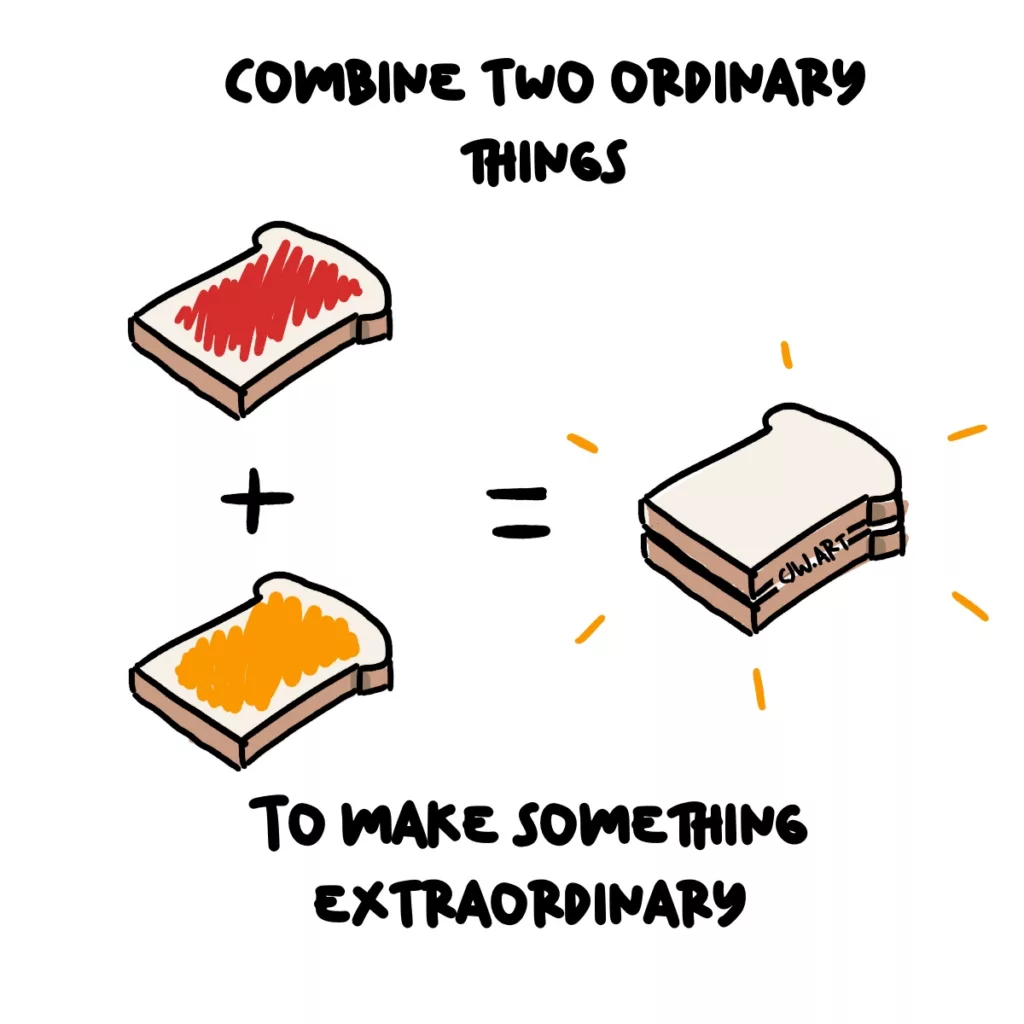
You don’t have to start with nothing.
Most creativity starts by combining two things that already exist in a new way. Like a musician that takes elements of two musical styles to make something new.
The most creative ideas usually take two extremely different influences — perhaps from different fields — and combine them.
Warning: Results may vary
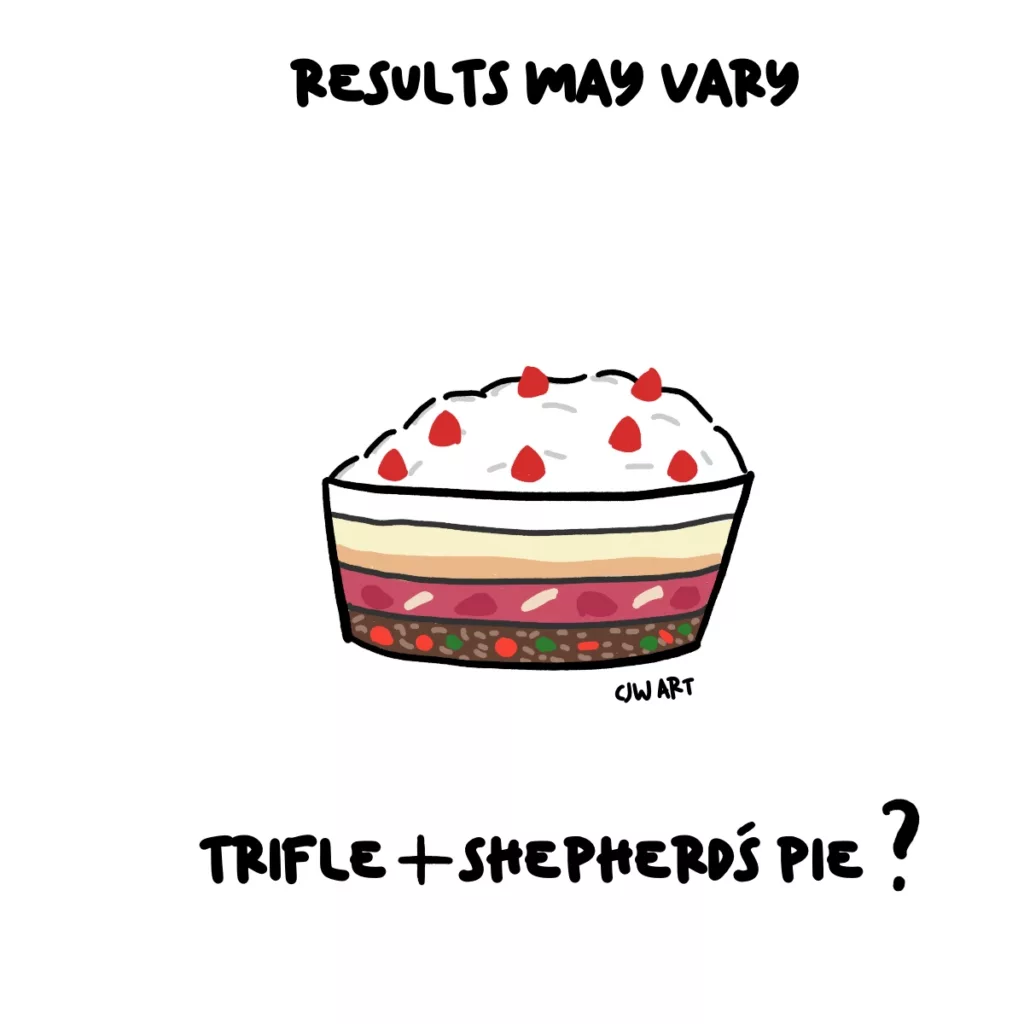
Just remember that not all combinations will work.
Action: Think of two things you like, and think about how you could combine them.
Try adding a new constraint
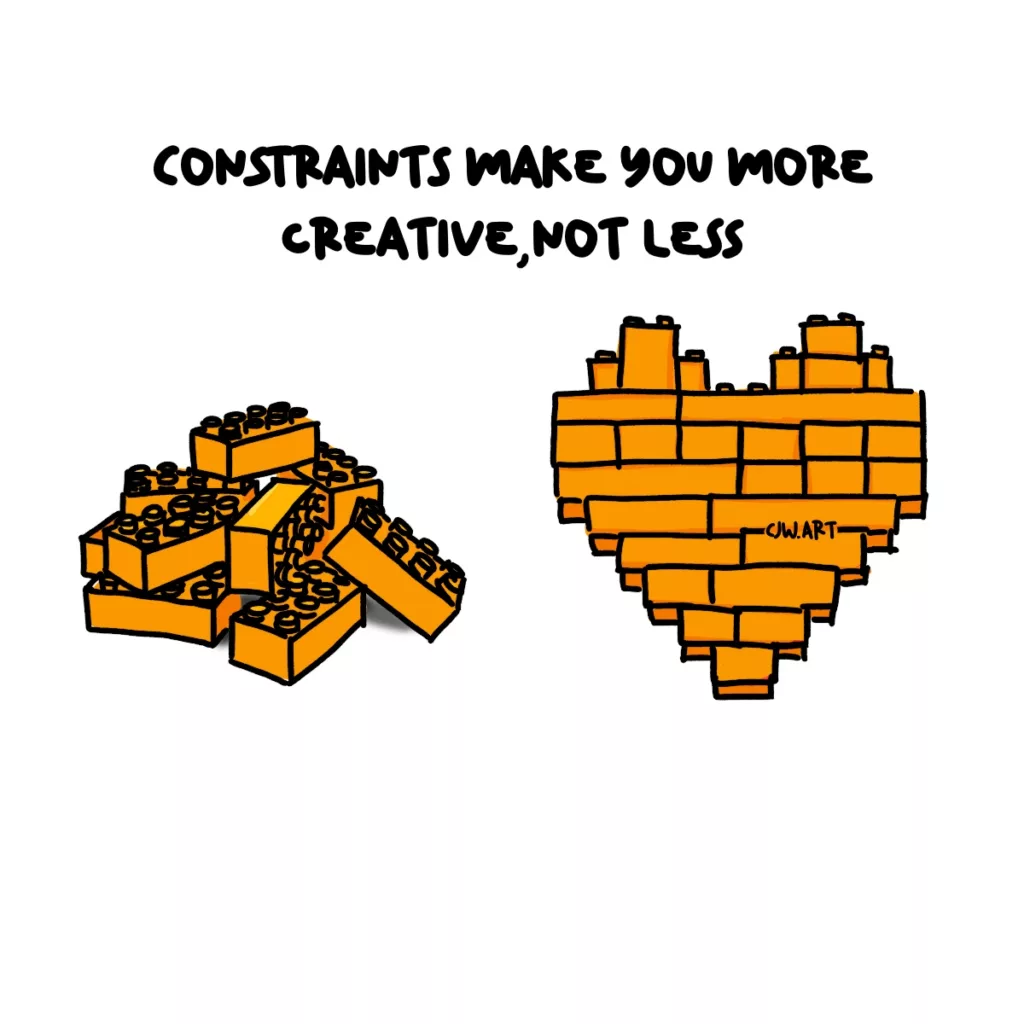
Most of us think creativity requires complete freedom.
That’s completely wrong.
Too much freedom makes it harder to think of an idea. Adding a limit (like the number of colours you use, the type of elements you have, a time limit, the number of notes.,) makes it easier to create and leads to more interesting creations.
Pro tip: sometimes adding an arbitrary constraint will make you think of an idea without that constraint. Save it for later.
Action: make a list of 10 constraints that would make creating “harder” and then try them out when you need them.
Go on an artists date
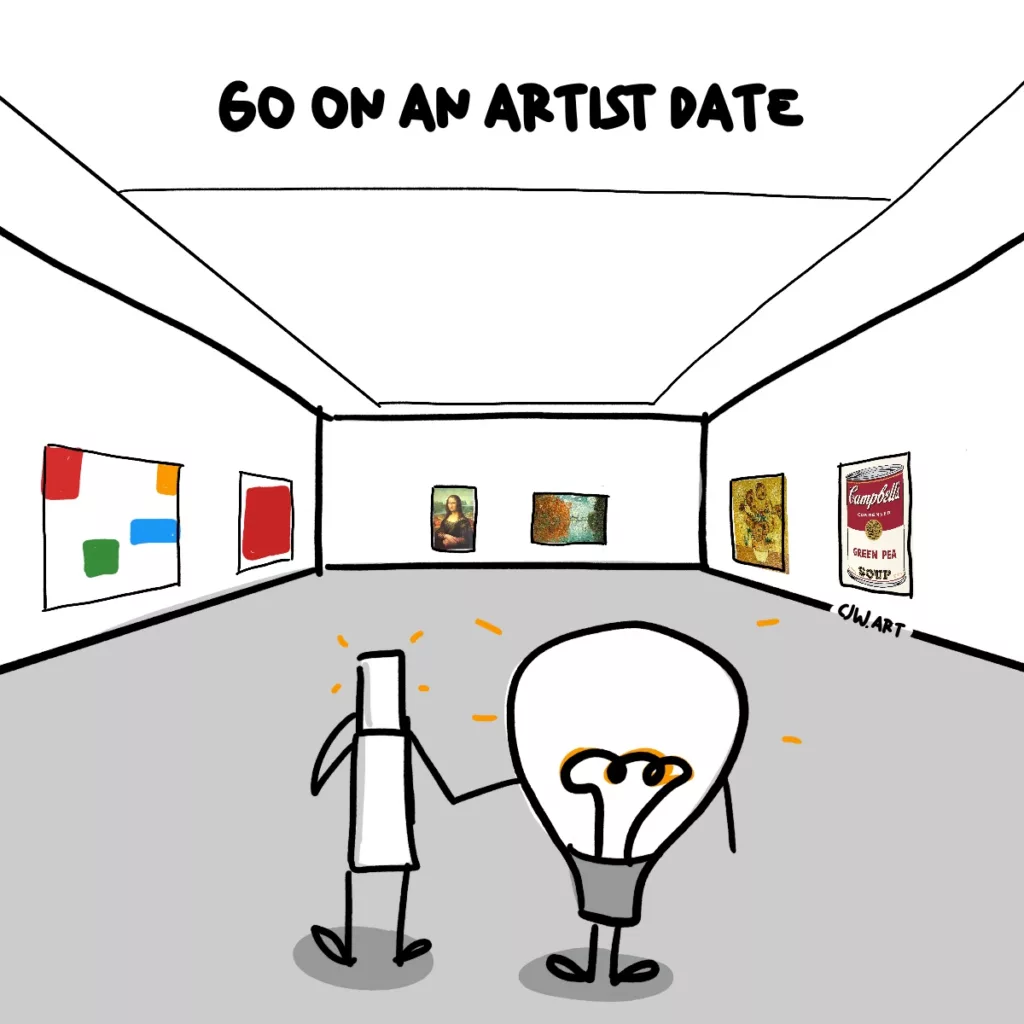
Every relationship needs quality time to stay healthy and grow.
Same with creativity.
You need to invest time going to inspiring sources to be inspiring. It’s not just about finding ideas to steal but gaining energy and enthusiasm to create.
These shouldn’t be examples in your direct field, but high-quality creations from other fields.
Action: set regular times to be inspired by going to an art gallery or museum, watching good films, listening to great music, or reading poetry or novels.
P.S. This is an idea from Todd Henry’s book called The Accidental Creative which explores how to be creative on demand.
Your failures are key to your voice
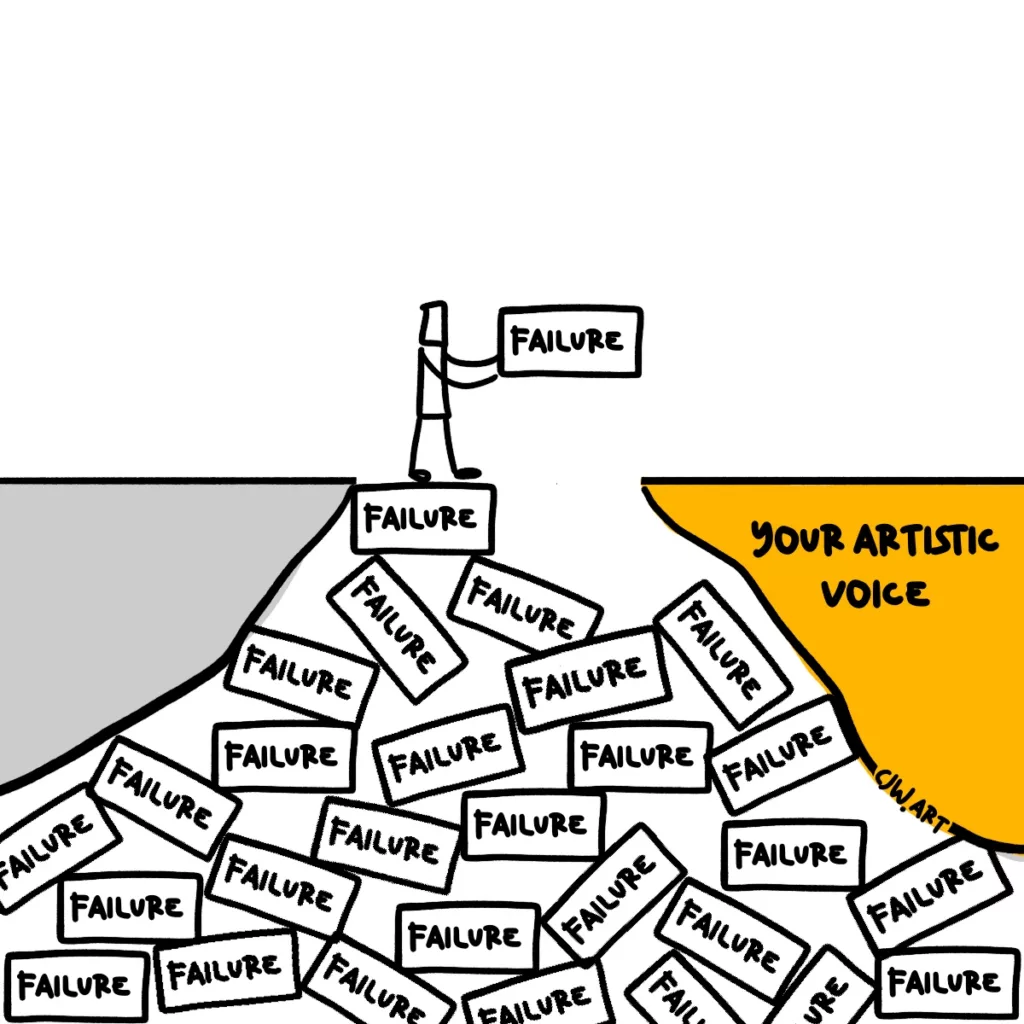
Failure sucks.
But it is an important part of the creative process.
Getting good at something involves making mistakes, and once you’re an expert you still need to take risks to keep things fresh. And that means trying things that don’t work.
But here’s the key thing — your limits are often what define your style.
For example, I can’t draw hyper-realistic images so I make simpler ones. That has some benefits to viewers, but it’s a limit that has defined my voice.
Action: Identify your limits and think about how you can use them to create a unique style.
P.S. This idea is stolen from Austin Kleon’s great book Steal Like An Artist.
Good ideas are shy, they need bad ideas for company
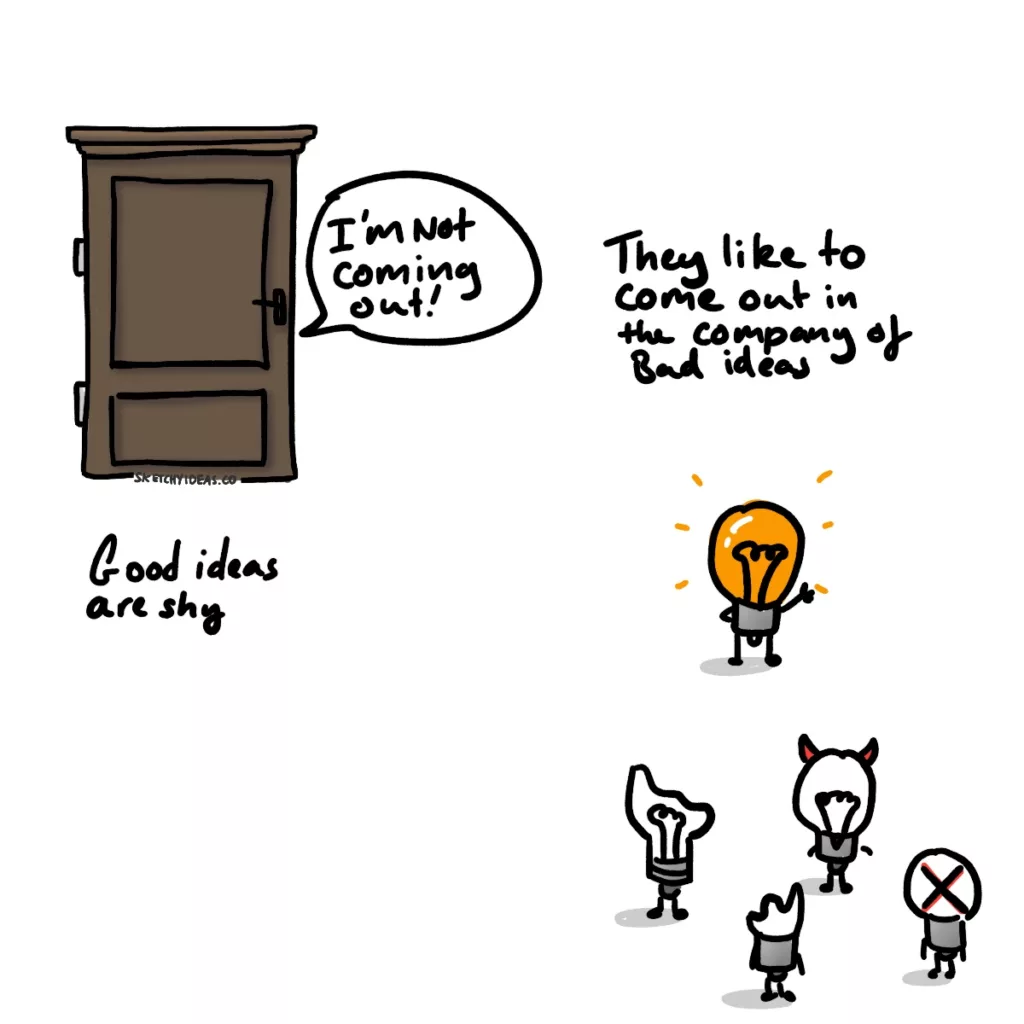
Thinking of a good idea is hard to do.
Sure, sometimes you have an instant burst of inspiration but more often the first ideas you have are cliché or boilerplate.
While they have their place, they’re not creative.
To get to a good idea, you need to do what Ed Sheeran calls “Clearing the creative faucet”
I think you view it as a dirty tap. When you switch a dirty tap on, it’s going to flow water out for a substantial amount of time, and then clean water is going to start flowing. Now and then, you’ll get a bit of dirt, but as long as it gets out of you, it’s fine.
With songs, you’re going to write songs, and at the beginning, my songs were terrible. My raps were awful—like, I listened to them the other day, and it’s just bad. But I got it out of me, and the more and more you write, the more you experience, and then you start flowing clean water. Songs start getting better and better. When you’re on a good streak, you’re writing good songs. Now and then, you’re going to write a bad song, but it’s out of you, and you can move on.
Ed Sheeran
Action: Accept that your initial ideas will be bad, and use practices like morning pages to help clear your creative junk out each day.
When you’re stuck, try inverting.
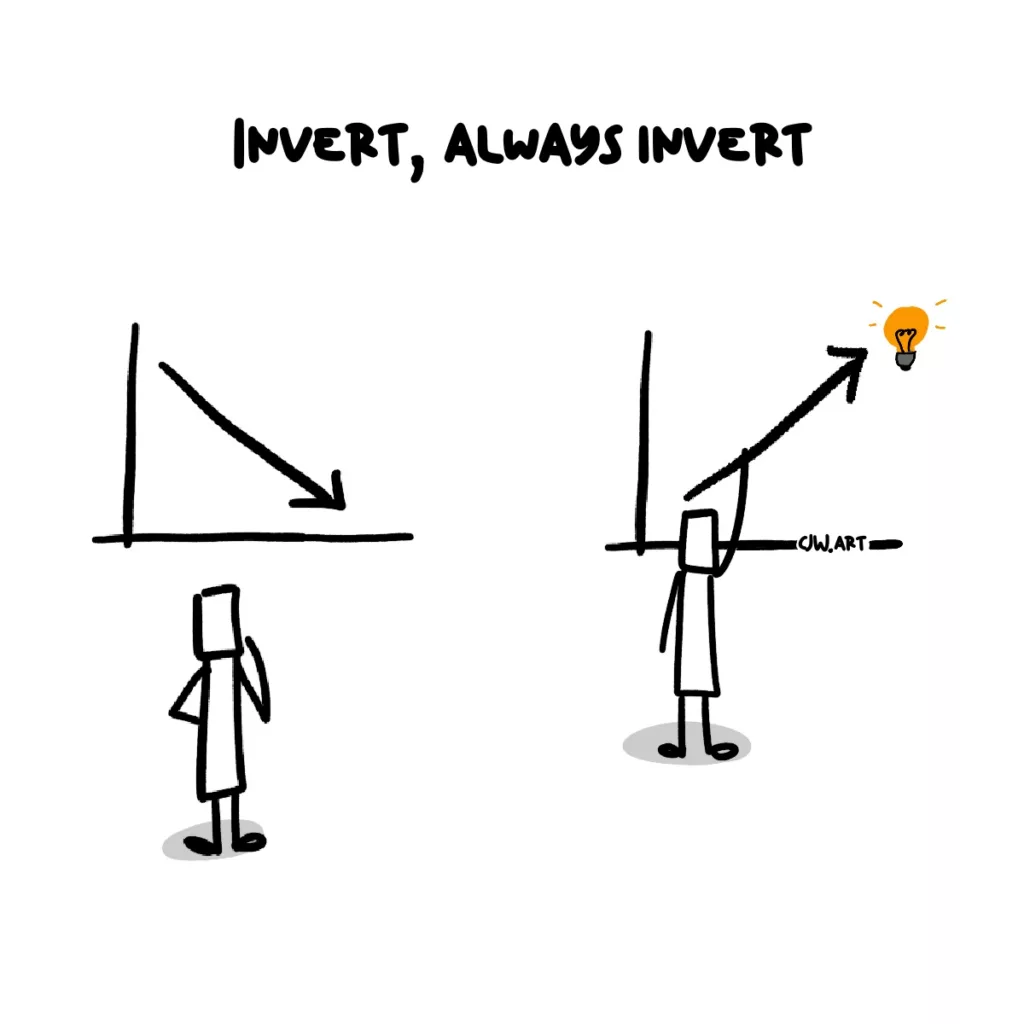
It’s easier to have a bad idea than a good one. But we can use that to make it easier to have good ideas.
It uses the mental model of inversion. All you do is think of what the worst option would be (and why) and then flip it on its head.
It’s especially powerful if you don’t even know where to start or can’t get over how bad your ideas are. Often, I find that as soon as I start describing the worst option, a good idea starts trying to pop into my head.
Action: When you’re next stuck on a project, think what the worst version would be and why, then describe the opposite.
Ask what does it want to be
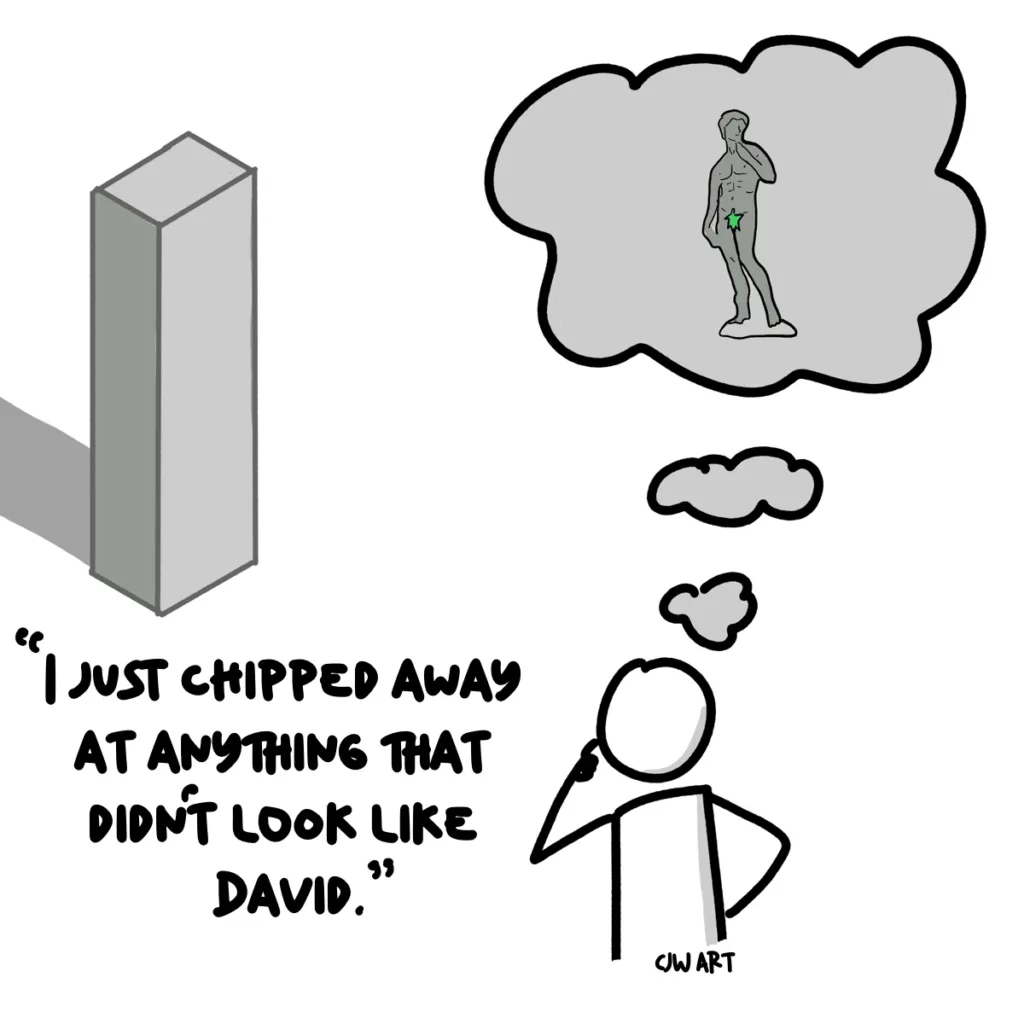
Michelangelo wasn’t the first sculpture to attack the block of marble that eventually became David.
Many other sculptures had attempted to create something out of it and had left their own marks on it — including a huge chunk missing from one side. That missing chunk is why David is posed in such an unusual way.
So how did Michelangelo succeed? Well, according to an apocryphal telling of the story, he just removed every bit that wasn’t David from the stone.
This is how we can approach creative work. We work with what we have and remove the parts that shouldn’t be there.
Action: think “what does this want to be” when your faces with a new project/task or “What does this tool want to make” to give yourself a new creative constraint.
Activate the creative perpetual motion machine (bounce ideas off other people)
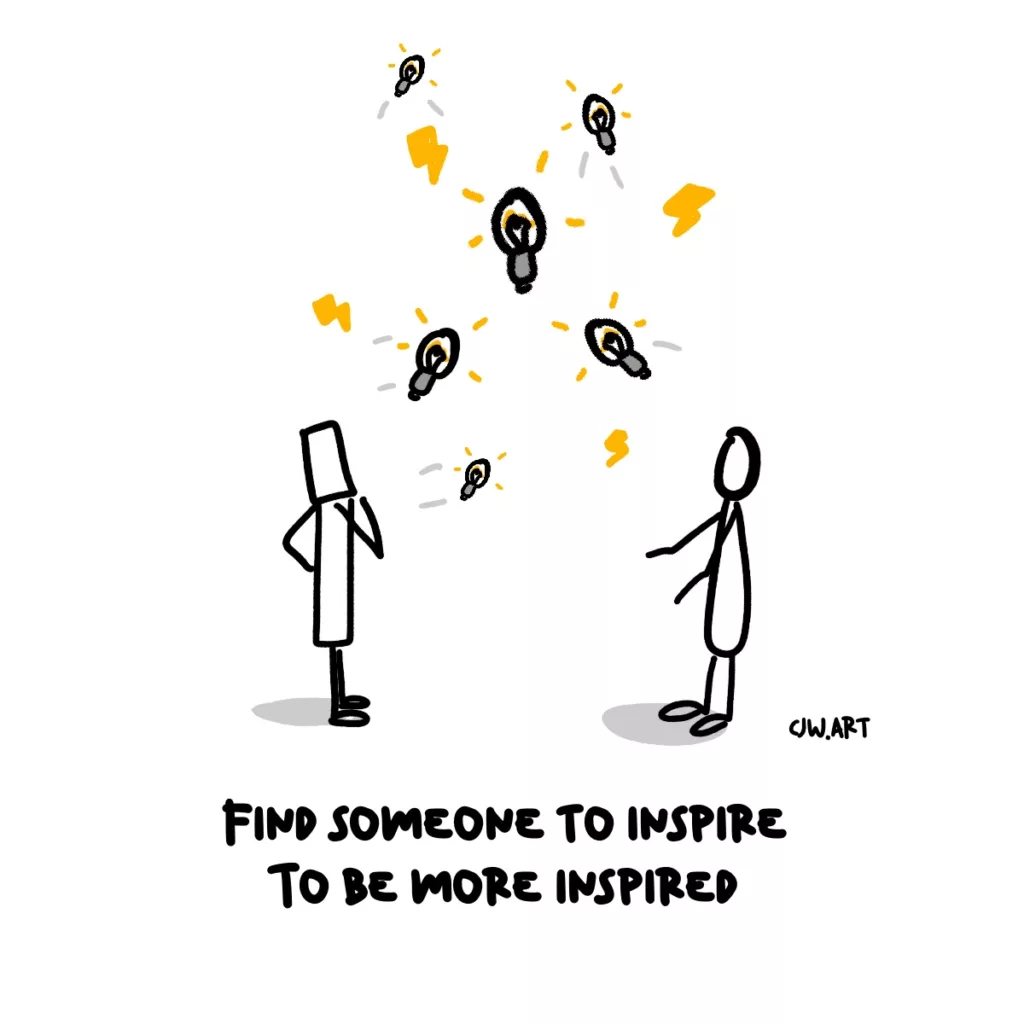
Ever had a conversation with someone that was like a perpetual motion machine?
You come in with one idea, that gives them another different one, then that inspires you more and an hour later you both have a bucket of new ideas and inspiration.
I certainly have and I hope you have too.
One of the surprises I’ve found is that they don’t even have to be someone in your field (and in fact, it can be better if they aren’t). When they don’t know your topic, they can provide a different perspective, provide unique inputs and ask simple but provoking questions.
Action: find a conversation partner or two with whom you can share your ideas and inspiration from the week and be inspired by their ideas.
A 20-minute walk active your brain
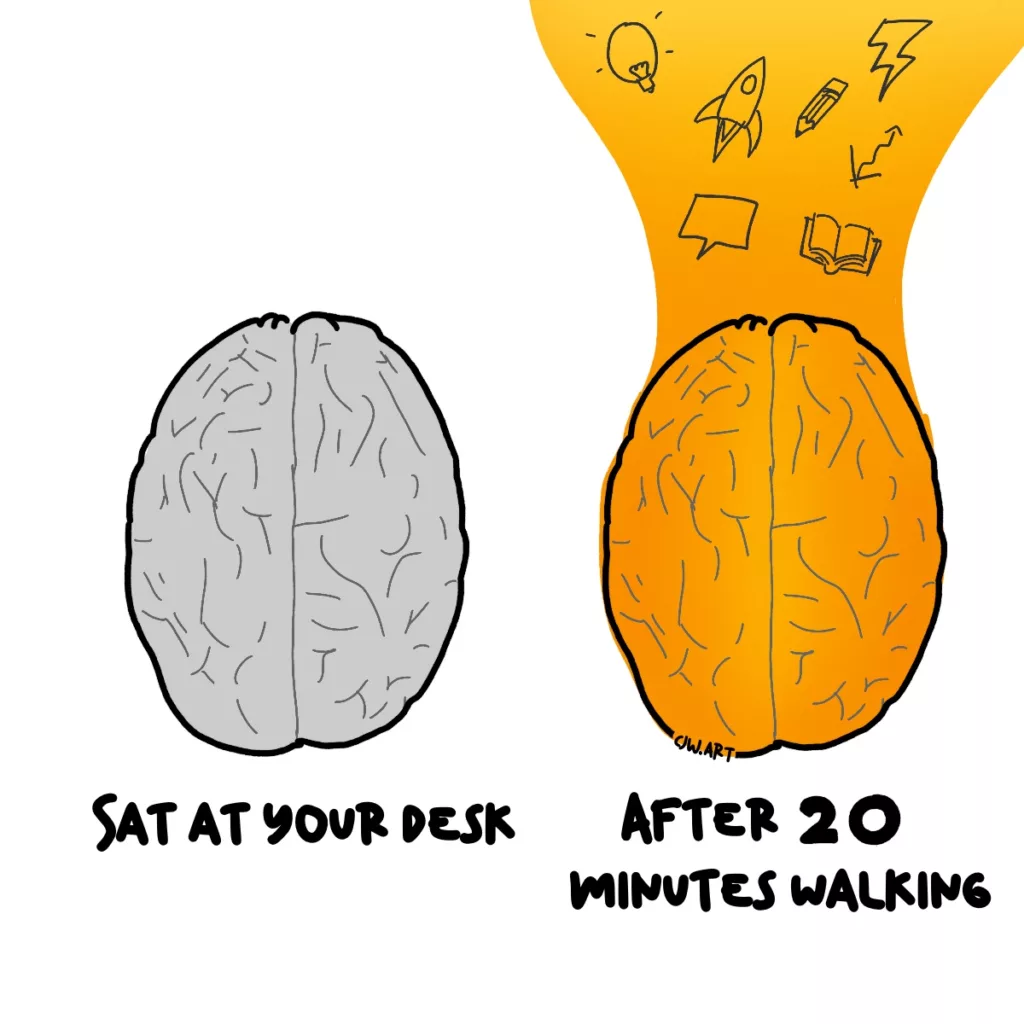
You’re brain is not a computer, it’s a living thing.
So we shouldn’t treat it like a device to turn on and off, but an organ to be looked after. That means not just feeding it and exercising it but looking after our bodies too.
Walking is one such way.
When you go on a walk, you increase your oxygen levels and raise your heart rate. This, along with your focus, the sounds of nature, etc., causes your brain to operate in a different way.
It’s why St Augustine said “It is solved by walking”
Solvitur ambulando
St Augustine of Hippo
Action: Plan regular walks during your day for a burst of creative energy. If you can’t leave your office or home, make shorter trips and find ways to raise your heart rate.
Change your perspective for a breath of fresh air
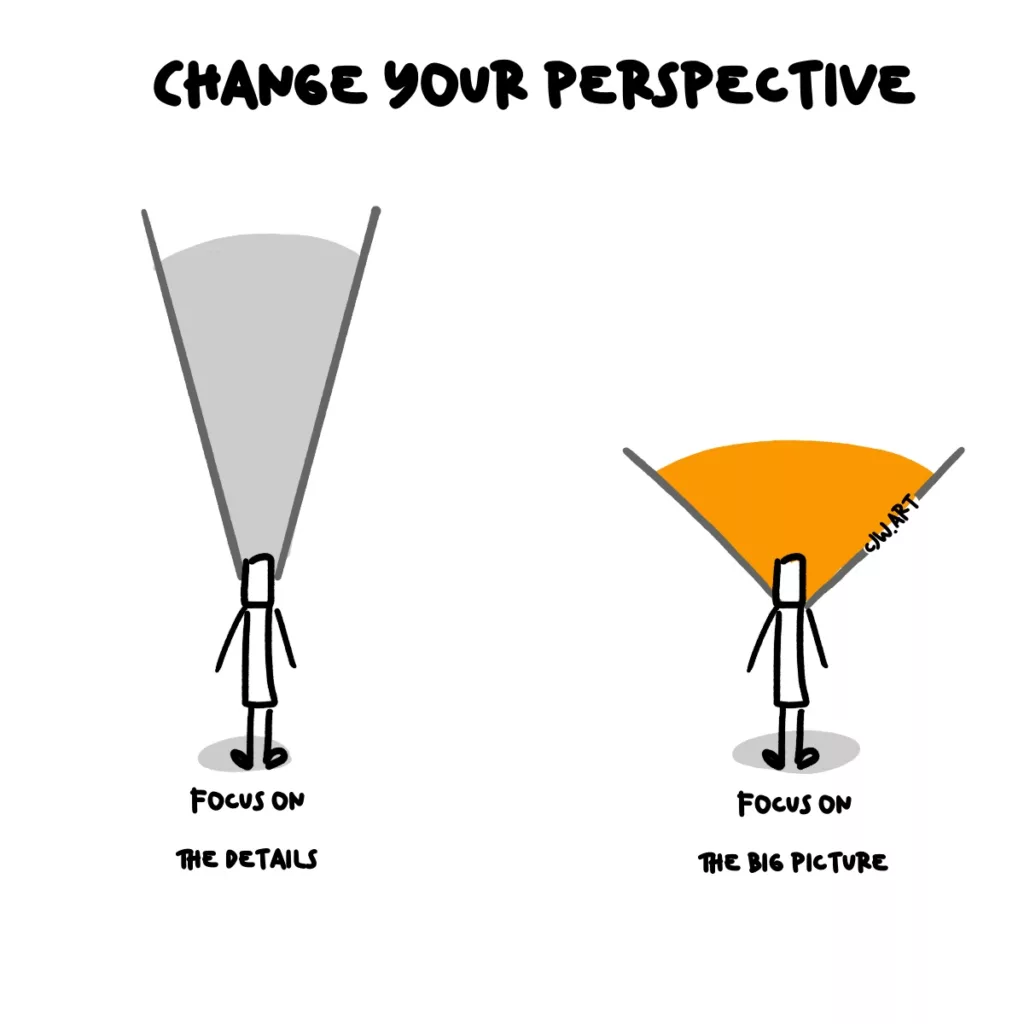
You can’t see everything all at once.
If you focus on the big picture, it’s harder to see the details, and if you focus on the details, you’ll miss all of the big picture.
But shifting your perspective can help with each part.
For example, when you’re stuck on a detail, it can help to zoom out and remember the big picture. Likewise, when you’re stuck on the big picture, it can help to dive into the details.
Action: if you find yourself stuck on one part of the creative process, change your perspective to gain new clarity and momentum.
Help others be more creative
If you’ve enjoyed this and found it useful, I’d love it if you help others be more creative by
And if you want to make sure you get the next visual thread like this, join my visual newsletter here.

Leave a Reply